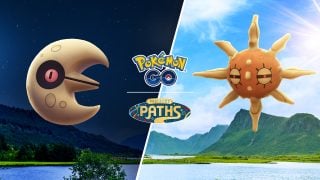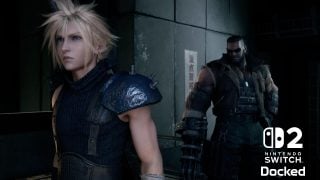When people ask what my favorite game is, my shorthanded answer is always EarthBound. The SNES classic has so much to love about it– and does so with a unique identity– that can only be matched by its predecessor and sequel. Today, that sequel is on my mind for a very special reason, as it was ten years ago today that Mother 3 was released in Japan on the Game Boy Advance. While I’m thankful that this game exists, we still live in a world where it has never been officially localized outside of its home country, creating a veil of ambiguity over what Mother 3 is and all the beauty nestled in that one cartridge. Because deep down, even though I say and mean EarthBound as the answer to that most common of questions, every time I’m asked I wonder if today will be the day I say “Mother 3” instead.
Mother 3 has many things in common with its SNES big brother– including, but not limited to– gameplay, music, some characters, personality, and a visual style that captures this world perfectly. However, it’s also so much more; all at once a continuation of what the first Mother started and a standalone work that tells a deeper story in a far bleaker world. I’ll refrain from spoiling any story beats, but having played the game from beginning to end, it put me through a spectrum of emotions while also making me think the almost entire way through. Not because of any sort of puzzles, but because of deeper philosophical threads holding the title together. Questions of societal development versus respecting nature find their way into the plot, but also the enemy designs. The role of media and the ramifications of blindly following it are brought to light in an early game quest and the impact of those moments run through later chapters. While some games fall into trappings of telling and not showing when it comes to the narrative, Mother 3 successfully shows, tells, and allows you the player to experience first hand all it has to offer.
Narrative growth wasn’t all that Mother 3 brought to the table. The presentation and gameplay saw improvements as well. The Game Boy Advance’s processing power allowed for clearer sprites and more vibrant battle backgrounds, as well as a more varied color palette. While the development of EarthBound 64 was leaning towards a 3D world, I’m frankly thankful the sprite-based presentation was retained and refined. The core gameplay wasn’t altered too much, as it is still a menu based RPG in the Dragon Quest tradition, and the addition of a combo system made all the difference. Before, the most exciting and varied thing that could happen with attacks in EarthBound was a resounding “Smaaaaaaash!” serving as a critical hit. Now, every enemy in the game had a heartbeat that could be discovered by putting enemies to sleep and listening carefully; then timing button presses from physical attacks to add more hits along with the rhythm. This, along with the staple PSI/PK attacks and the series’ penchant for atypical weapon and item choices, created combat that remains fresh no matter how many battles you’ve fought and encourages an understanding of its bestiary.
Speaking of sound, Mother 3 may have the best soundtrack on the GBA. Featuring a sound test option to enjoy it, there’s no shortage of amazing songs to savor. Just like its narrative tones, the soundtrack ranges from quirky battle themes, to military style marching songs, to one of the most emotionally fulfilling ending credits theme to ever grace a game and series. The game’s use of music extends to its characters and scenarios as well, including a group of characters that eschew the confines of gender, and are named for modern musical modes, a recurring dance used to open ancient doors, and a rock band operating out of nightclub that perform multiple times over the course of the game. These offbeat notes are ironically what holds the tapestry of Mother 3 together tonally, keeping the narrative’s weight from bringing the player down emotionally. For even though everything this game presents resonated with me as a human being, it isn’t always a happy adventure. Again, I’ll spare any spoilers but this is a game that explores both the good and the bad parts of life in all their glory.
RPGs are often times defined by their party. You spend the majority of the game with these characters and it is generally through their eyes that you see the world unfold. Mother 3 does not disappoint in this regard. While the prologue and the majority of the game is spent controlling Lucas (known worldwide thanks to Smash Bros.), he isn’t the only one you guide. The core of the game revolves around Lucas’ family, which include moments spent playing as his father, Flint, and the presence of loyal dog Boney as the most frequent party member. Others include Kumatora, a tomboyish princess with phenomenal psychic powers, and Duster, a trained thief with a limp whose qualities make him no less kind and effective, respectively. Likewise, a monkey named Salsa takes the forefront of a mid-game chapter that serves to show just how much the lives of these and other characters from Lucas’s hometown of Tazmily Village has been affected. As time passes across these early chapters, the village creeps towards change and modernization, and with these strides its residents gradually change as well. This progression, seen both in the world and its characters, is another way Mother 3 feels more tangible and impactful than its predecessors, becoming something deep and worth exploring.
No discussion of Mother 3 from an American perspective can go without noting the efforts of Clyde “Mato” Mandelin who spearheaded the project. His work’s quality stands among Nintendo’s own localizations and gifted a strong community with a game people felt they’d never be able to play in their native language. Similarly, the thriving community at Starmen.net kept this dream alive, as it worked hard to make fans’ voices heard to Nintendo of America. While their voices haven’t been heard on this particular matter, their efforts certainly played a key part in the Virtual Console release of EarthBound, as well as the original Mother coming to light as EarthBound Beginnings. Finally, the Mother 3 Handbook put together by Fangamer allowed fans a guide and collectible bursting with charm and quality and stands alongside the Official EarthBound Player’s Guide in terms of an integrated companion piece to the game that begot it.
My love for Mother 3 and the entirety of its series runs deep, and while I could go on and on about its strengths I feel it more fitting to list some of the wonderful things you, as a player, encounter in the Mother 3 world:
- Frogs that operate as both ATMs and save points
- A castle-wide ghost party
- Friendly dinosaur-dragons
- A tea table that serves as an excellent source of transportation
- Awfully friendly breathing apparatuses
- Love
- Negativity incarnate
- A positive, if bumbling in-law
- The trials and tribulations of a doorknob
- Many, many more!
Mother 3 has many things to cherish and hold dear, and it is my sincerest hope that writing this moves interest of this game forward… even a little bit. It’s with continued interest that it could someday see a wider release, putting it in the hands of many. Mother 3 used a particular turn of phrase in its marketing and resonates with the game itself, and at this point, some of my personal views of life itself. On today, its tenth anniversary, I’m reminded that all of us will be, and experience events that will be, “…strange, funny, and heartrending,” just like my favorite game of all time.





